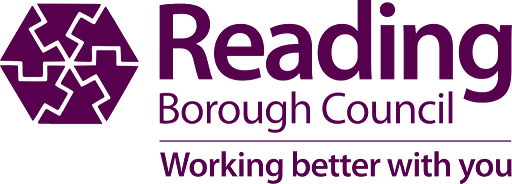New Public Consultation on Tackling Congestion and Air Quality
Reading Borough Council will this week withdraw its East Reading MRT planning application ahead of a public consultation on how the Borough should tackle worsening congestion and poor air quality in the future.
Reading’s planning application for a segregated bus, pedestrian and cycle route between east Reading and the Town Centre was rejected for a second time by Wokingham’s Planning Applications Committee in December. Regrettably, Thames Valley Local Enterprise Partnership (LEP) has now confirmed it has withdrawn £19 million of funding for the scheme as the timescales associated with the funding could not now be achieved. The Council will withdraw its planning application for an East Reading MRT in order better to facilitate a wide ranging public engagement exercise to help shape a new Local Transport Plan for Reading. In the context of the significant levels of growth planned for Reading and the wider area in the coming years, the option to do nothing does not exist.Councillor Tony Page, Reading Borough Council’s Lead Member for Strategic Environment, Planning and Transport, said:
“In light of Wokingham’s second refusal and the removal of LEP funding for the scheme, the Council has decided to officially withdraw its planning application for the new pedestrian, cycle and public transport link in East Reading. “A great deal has been said about the East Reading MRT proposal, some of it based on genuine concern about the riverside setting of the new route, and some of it based on confusion around the benefits of the scheme. The fact remains, however, that the significant levels of growth Reading will inevitably absorb in the future means we need to find sustainable transport solutions which offer realistic alternatives to the private car. “The East Reading MRT application offered a walking, cycling and public transport alternative to the thousands of commuters who drive between Wokingham and Reading every day, adding to congestion and poor air quality experienced by residents in Reading. While it has not been possible to progress the scheme, the Council’s own financial investment will certainly not be wasted and will now feed into the development of a new Local Transport Plan for Reading later this year. “So we will now move on, look forward and engage with people on how these serious issues can be tackled in the future.” Reading’s economic success makes it an attractive place to live, work and visit. The town is home to a large number of national and international companies, demand for new homes has never been higher and it remains a key shopping and leisure destination in the region. While welcoming this success, it means Reading continues to face the serious challenge of managing future growth, particularly in terms of commuter congestion and poor air quality in some parts of town, particularly in the east of the borough. Demand for new housing means many thousands of new homes are planned in the coming years, both inside Reading and, in particular, just outside the town in neighbouring authorities, including Wokingham. Congestion and air quality is likely to deteriorate, with many new residents choosing to commute to Reading for work on a daily basis. This will inevitably impact on the quality of life and health of residents in Reading. As part of a public consultation and visioning exercise to be launched in the spring, Reading Borough Council intends to engage with residents, neighbouring local authorities, businesses and other stakeholders on options for future transport solutions. Responses will help to inform a new draft Local Transport Plan for Reading with specific proposals, which will also be the subject of public consultations later this year.Councillor Page said:
“Reading’s reality is that - like many successful towns and cities - congestion and poor air quality is having a real effect on the health and wellbeing of our residents. Many thousands of new homes will be built both inside and particularly on the outskirts of town in the future. This will create many thousands of new commuter journeys into and out of Reading, further blighting the health and quality of life of residents who live here. It is not a situation that any responsible authority can ignore. “Whilst the East Reading MRT application has been withdrawn, the challenges that it sought to address remain exactly the same and will not go away or reduce. In stark terms, how does Reading plan ahead to successfully absorb the growth in housing, jobs and commuting in the future, whilst protecting the health of its residents? “The Council’s approach has been to develop new sustainable public transport routes as a realistic and viable alternative to the private car. Examples include new bus lanes along the A33, between the town centre and Mereoak Park & Ride, Christchurch Bridge, the new pedestrian and cycle route across the Thames, and on-going work to create a new cross-Reading cycle route. “By launching this public consultation, we want to hear from residents, businesses and visitors about their ideas for transport solutions to help manage levels of congestion and air quality and to mitigate the many thousands of new homes which will be built in the area over the coming years. Ideas will then feed into a new transport plan for Reading, which will similarly be consulted on later in the year. I would encourage as many residents, businesses and other stakeholders as possible to look out for details nearer the time. “And whilst this consultation is about the whole of Reading, I will also be extending direct invitations to engage in this important process with opponents of the East Reading MRT scheme. I hope they will agree to meet with me personally for a constructive and open discussion on options to provide sustainable transport solutions for East Reading, including the alternatives that were investigated at the East Reading MRT planning stages. There will be no ‘red lines’, only an open invitation to engage and help protect Reading’s future environment.”